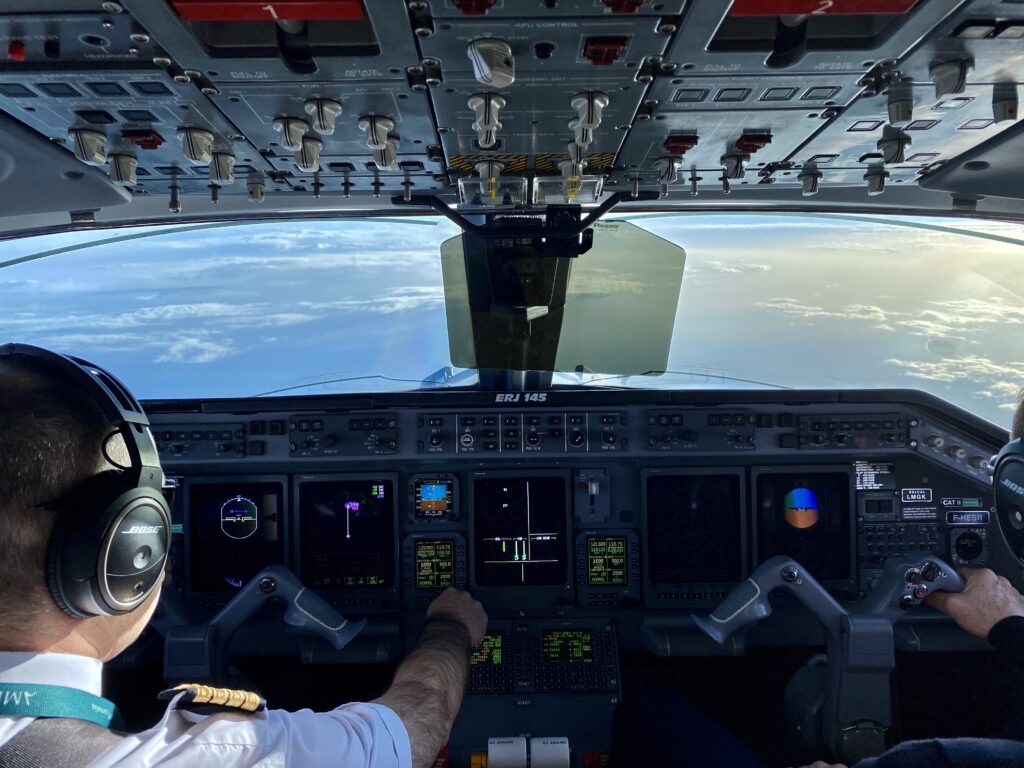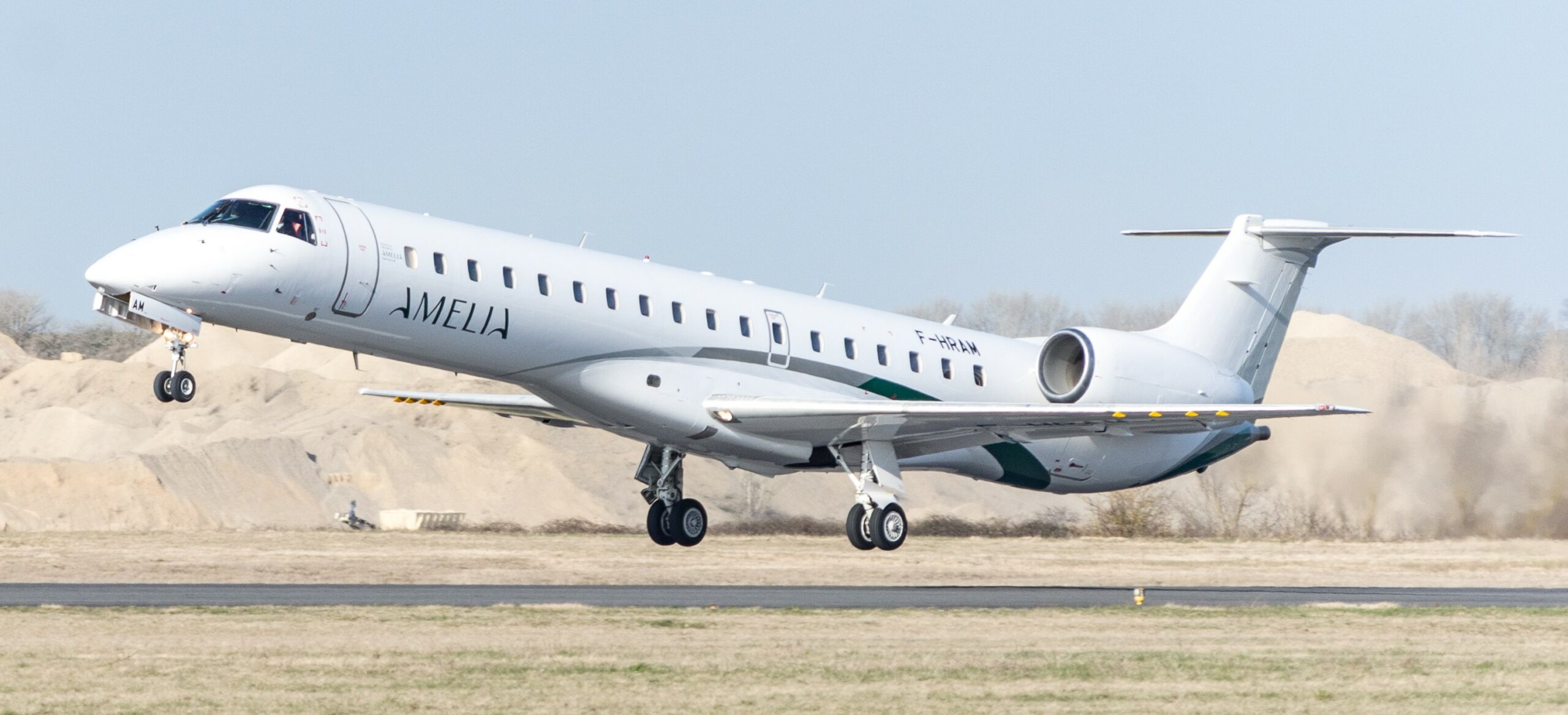Condensation trails (contrails) are a significant contributor to climate warming. But what are they, why do they occur, and how can they be avoided?
Amelia, a pioneer on the subject alongside its partner Thales since 2022, is now tackling the reduction of contrails. Since June 2024, we’ve been conducting contrail avoidance tests on some of our flights to reduce their climate impact.
Deep dive with Adrien Chabot, Chief Sustainability Officer at Amelia
What are contrails, and why do they matter?

Contrails, often visible behind airplanes, are artificial clouds composed of water droplets and ice crystals that can persist for several hours in the atmosphere. They form when water vapor emitted by aircraft engines condenses in the cold, humid air at cruising altitude.
Their formation mechanism, duration, and warming capacity depend on many factors, involving many scientists who are further investigating their potential impact on the climate.
Although their exact impact is still uncertain, their proven contribution to climate warming could be as significant as that of other greenhouse gasses, thus increasing the impact of air transport on global warming.
As an airline, Amelia is working today to better understand these phenomena in order to integrate them to improve our operations and reduce our climate footprint.
How to avoid contrails ?
Contrail formation is generally observed at high cruising altitudes, associated with cold temperatures and high humidity.
A good knowledge of weather conditions thus makes it possible to identify the areas most likely to generate these phenomena.
By leveraging weather forecast, the flight plan for a given operation can then be adjusted to avoid these areas by bypassing them vertically, via a flight level change, or horizontally, via a routing change.
The ideal modification may also be a combination of these two strategies.

How does the Amelia/Thales partnership address this challenge?
Since 2022, Amelia has been collaborating with Thales on the development of the Flights Footprint solution and its integration into the company’s operations.
This platform, based on scientific models, allows us to estimate the overall impact of our flights on global warming: it takes into account greenhouse gases such as CO2 or water vapor, and “non-CO2” effects such as nitrogen oxides or contrails.

The implementation of this solution in the company’s tools also allows it to be used as early as the flight preparation and planning phase.
What are the tests performed by Amelia about?

As a first step, all flights operated by Amelia were analyzed to identify the best candidate flights, i.e., the routes most prone to contrail formation: the “big hits”.
It was a regular operation between France and Spain that caught the attention of the teams in order to define the most suitable avoidance strategy.
Since the beginning of June 2024, a dozen flights have been analyzed, as early as the planning phase, in order to adjust the flight profile if necessary. With the participation of numerous sectors (operations, IT, crews), we were able to implement a contrail avoidance policy on several flights, focusing our efforts on the most impacted flights, through a vertical avoidance strategy using an adjustment of the cruising altitude.

The results are highly encouraging with a noticeable reduction opportunity of overall climate impact (including CO2 and non-CO2 effects), from 30% to 40%, despite a slight increase in fuel consumption (3% to 4%) resulting from the flight profile update.
These experiments are crucial as they are certainly the first ones carried out in Europe in an operational framework.
The implementation of these experiments is notably supported by the participation of CORAC and French DGAC within the framework of France 2030.
What are the next steps?
Contrail avoidance is a rapid and readily available solution to significantly reduce the climate impact of our operations.
The experiments will continue in the months and years to come. The improvement of scientific models and the automated integration of recommendations into air operations will allow for a gradual systematization of tests in order to build a solid knowledge base. The refinement of the models will also allow for better optimization of the trajectories to avoid unwanted areas and, consequently, an increase in the number of flights handled.
Beyond the technical and scientific aspects, these experiments are increasing awareness and training of Amelia staff and customers about the consequences of these non-CO2 effects.
This pioneering approach also allows us to prepare today to meet European requirements in terms of monitoring and reporting non-CO2 emissions, which should come into force as early as January 1, 2025.